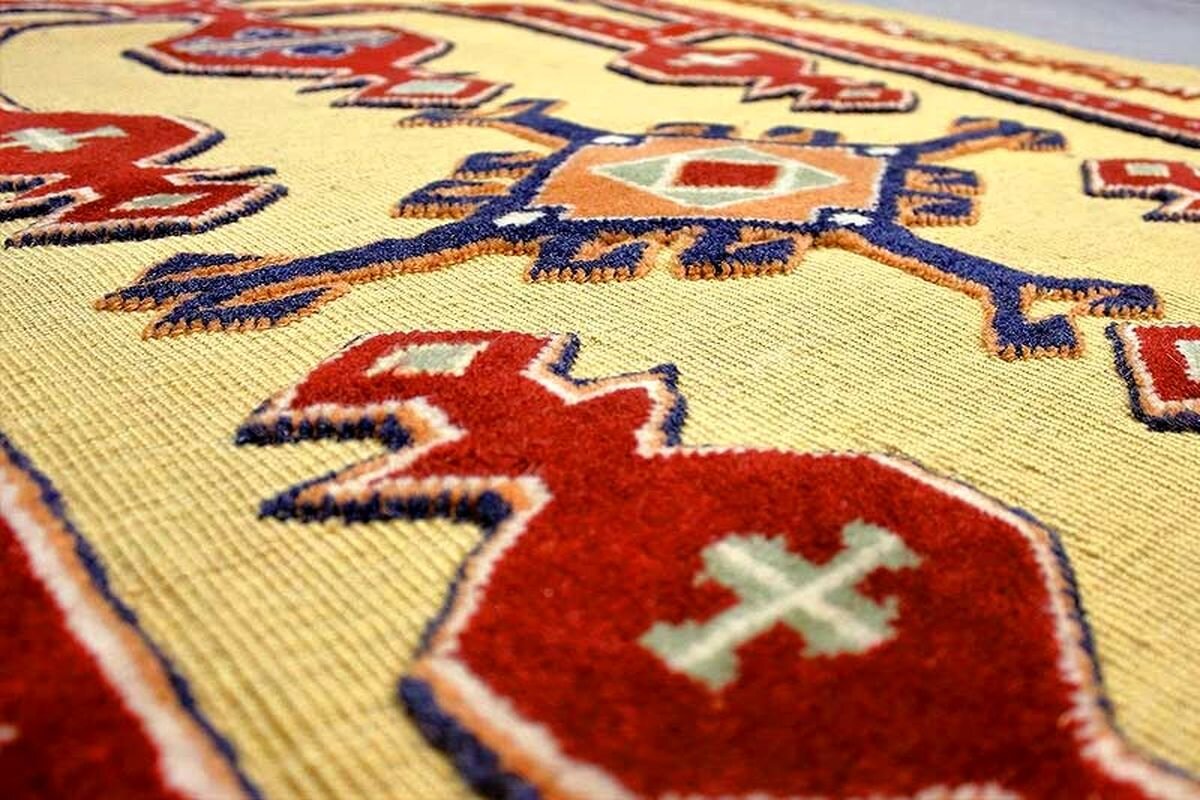Ilam embossed kilim to become global

TEHRAN--The Director General of Ilam Cultural Heritage, Handicrafts and Tourism Department said, “We seek to turn Ilam embossed kilim into a global item.”
Farzad Sharifi told ISNA that the embossed kilim is the most prominent and authentic product of the indigenous industries.
Over 3,000 square meters of kilim are produced by Ilami weavers, he said, adding it has a world fame and has been registered on the National Heritage List.
“We use every chance to introduce and sell this indigenous artifact in domestic and foreign markets. After it is nationally registered, we seek to globalize it.”
Arbaeen pilgrims and Nowruz holidaymakers welcome this product at handicrafts stalls annually, he said.
Ilam municipality has boosted the globalization trend of this handicraft product through installing the element of embossed kilim in the center of Ilam and naming a street in the provincial capital for it, he added.
“We witnessed the enthusiasm of people for embossed kilim during holding handicrafts fair in Wasit province in Iraq. We also introduced the embossed kilim during this year’s trip of Ilam governor general and the provincial officials to Iraq.”
Historically, Ilam has been renowned for its Kilim production, a craft that dates back centuries. However, the embossed kilims (locally named Gilim-e Naqsh Barjasteh) represent a relatively recent development in the region’s artisanal landscape.
This innovative style was pioneered by a skilled weaver named Sahar Chalengar. Through her ingenuity, Chalengar introduced an embossed motif into the traditional Kilim by integrating carpet knots into the weaving process. Her unique approach quickly gained popularity, revolutionizing the craft and spreading across Ilam province.
The creation of embossed kilims involves a distinctive technique that sets them apart from traditional Kilims. The background of these Kilims is woven using a conventional method known locally as “Sufi Bafi.” The motifs, however, are crafted using Turkish carpet knots, which naturally make them stand out in relief against the flat background.
This embossing effect adds a three-dimensional quality to the Kilims, enhancing their visual and tactile appeal.
The primary materials used in embossed kilims are wool, cotton, and sometimes silk yarn. These materials are sourced from local cattle farmers, ensuring a close connection between the weavers and their environment. Wool is used both in its natural color and dyed with natural and chemical pigments. The dyeing process often involves the use of white alum to stabilize the colors, ensuring they remain vibrant and long-lasting.
The process of making an embossed kilim begins with the installation of the loom. While both vertical and horizontal looms can be used, vertical looms are now more commonly chosen. The Kilims are woven based on symmetrical patterns, and unlike simple Kilims, they allow for the inclusion of cursive motifs. These motifs include traditional designs such as “Lachak – Toranj” (paisley), “Goldani” (vase), “Gol-e Farang” (rose flower), “Naghsheh Ghalat,” “Botehee” (bush), “Mehrabi,” and various floral, animal, and figurative motifs.
KD
Leave a Comment